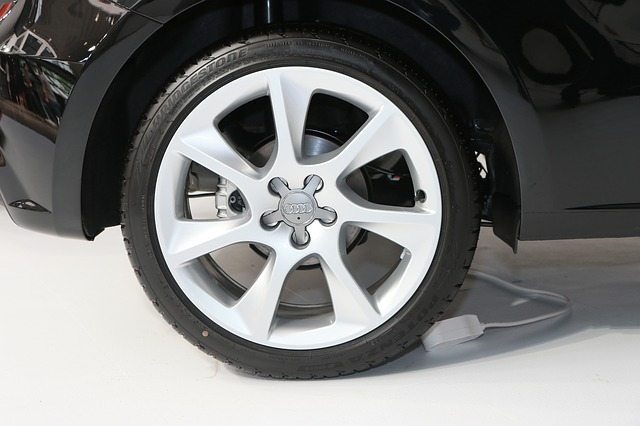
SHOP for TIRES
What's New in Tires?

As the foundation of a well-functioning vehicle, tires can affect everything from steering and braking ability to fuel efficiency. Goodyear and Michelin are the top two sellers in the tire market. As the consumer market for vehicles and tires grow, the tire industry is looking to improve durability, performance, and safety.
The Daily Grind
Consider the work that just one of your tires does for each mile you drive. Specifically, an average line haul tire (used on personal vehicles) goes through 500 revolutions per mile, and if it reaches 100,000 miles, 50 million revolutions. The revolutions create constant flexion and deformity of the tire's sidewalls, and apply about 5,000 pounds of pressure onto one-square-foot of a tire tread.
Tires can even withstand temperatures as low as minus 50 and as high as 150 degrees.
There are the many hazards of driving, like unseen curbs, poorly paved roads (i.e., potholes or cracks), and excess debris that could damage or puncture the tire.
Considering what tires can withstand, it is an engineering marvel that the expectation for a tire's average lifespan has reached 100,000 miles.
Pneumatic Tires Currently on the Market
Beginning with their initial design in 1888, John Dunlop's donut-shaped tires are manufactured in 500 factories globally. The production rate is more than one billion tires per year.
Using rubber, carbon black, and various chemicals, the tires are molded under extreme heat and pressure. The heat reacts to link rubber molecules together and creates long elastic particles. These particles efficiently compress and reform to allow for continued revolutions as the tire moves along the road.
Currently, each manufacturer follows this same process but uses compounds specific to their ideal of durability and performance.
Self-Inflating Tires
While this technology already exists for military vehicles and other heavy machinery, it is currently being developed for the consumer market. As the technology is now, the self-inflating tires use sensors that measure pressure in the tire, and an air source either inflates of deflates according to the number.
This is something that many drivers overlook in their day-to-day routine, but can have an enormous effect on the grip of your tires and their ability to brake quickly.
Tires That Tell You When to Replace
The “Discolor Tyre” as featured on torquenews.com is one of the more recent safety evolutions in vehicle ownership.
Many regular drivers do not know or do not take the time to recognize when their tires are too worn. Worn tires are a significant safety risk, as the chance of hydroplaning is much greater.
The Discover Tyre acts as any other tire on the market today. However, this tire has a bright orange rubber layer that surfaces as the tread wear reaches the very minimum. This feature is incredibly useful for drivers and, additionally, would encourage drivers to change their tire, as it is a visible sign to all others on the road.
Truly Smart Cars
Cyber tires are a recent revolution, still in the works by Pirelli. If successful, these tires will efficiently collect information on the friction, footprint, and pavement grade of the tire.
The tires will communicate this to the vehicle's internal computer and traction control systems, which will adapt accordingly to create optimal power delivery and grip.
While the current work surrounds high-end sports cars, these digital tires will undoubtedly adjust to working with commuter cars as well.
Michelin's EverGrip
As the number two tire producer in the market, Michelin is looking to step into the number one spot with their impressive new tires. EverGrip tires can now change as they wear, adapting so that they can maintain the same performance until their very last revolution.
Current tires tend to lose grip and allow more water buildup as they age, creating much greater risk for drivers. These new tires are made with tiny sliced tread grooves that widen into teardrop shapes as they wear. This slicing allows water to escape and maintains the road-holding ability of the tire.
In stark contrast to the newly emerging, digital tires, the EverGrip tires manage to become even safer with time. Check out a reliable online dealer for the Michelin selection and over twenty other brands.
In Conclusion
While often overlooked, the type of tire your car uses is a major part of the vehicle's functionality. Many are now considering the use of nitrogen versus oxygen for filling tires, as it maintains a more regulated psi. While professional racecar drivers often use this method, the jury is still out on benefits outweighing potential negatives.
The bottom line is, keep your tires in good condition and use the appropriate tire for your vehicle, as well as for road and weather conditions.
